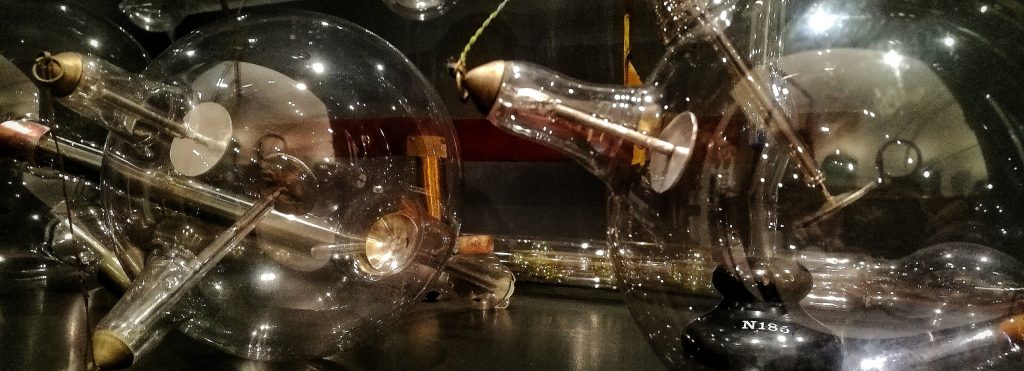The ‘800 Room
The ‘800 Room gathers all the instruments collected by Volta’s successors to the chair of Physics at the University of Pavia.
Quite the impressive collection, it is comprised of almost 600 items, some of which were one of a kind in the world. This certainly highlights how intense activities in Physics research and didactics remained at the Athenaeum after the death of the great scientist from Como.
Giuseppe Belli, in particular, who directed the Cabinet around the middle of the XIX century, extended the collection significantly. He also donated apparatuses of his own invention, among which were the electrostatic induction generator (by Belli named “ad attuazione” – literally “by implementation”), an electromagnetic engine, a modified Bohnenberger electrometer and his famous duplicator, still mentioned in the second to last Encyclopaedia Britannica. This device was capable of multiplying extremely weak electric charges, and was later used as a proper electrostatic generator.
The dimensions of the collection were already remarkable in Belli’s time, and were further broadened by his successor, Giovanni Cantoni, and by those who followed him.

Vacuum tubes
Today, the ‘800 Room houses an abundant number of items, almost all dating back to the XIX century. The items are grouped by field of study: electrology (the most abundant section), optics, thermology, mechanics, geodesy. On display on the shelves and platforms are:
- various models of electrostatic machine (by Bertsch, Holtz, Voos),
- instruments designed to measure intensity and effects of currents (a Thomson ammeter, an apparatus that showed the interaction between currents, a machine by Foucault which signals the presence of parasite currents, various galvanometers…),
- quite a few electrology instruments (coils, rheostats, resistors, capacitor, electromagnets, electrometers, tubes for the study of gas conductivity),
- optics instruments (a Silbermann apparatus used to verify the laws of refraction and reflection, apparatuses designed to identify Newton’s rings, monoculars, microscopes, polariscopes, spectroscopes, photometers),
- an Atwood machine,
- thermoelectric pile batteries and calorimeters,
- a boiler by Regnault,
- hygrometers,
- radiometers,
- various geodesy instruments (theodolites, levels, sextants).
Last by decidedly not least, the visitor may admire a hyperbaric chamber designed and utilized by Carlo Forlanini to study and treat pulmonary pathologies.
